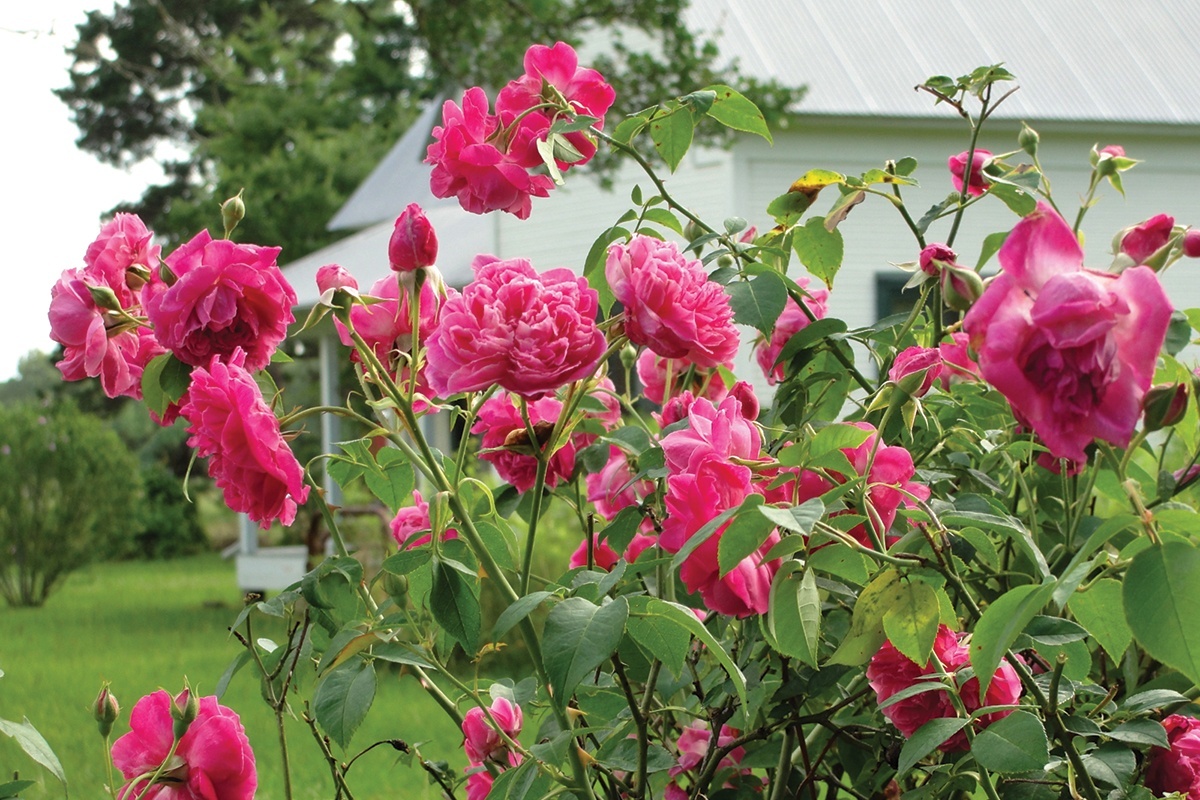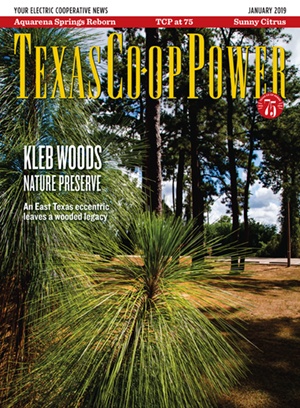Rose rustling is nothing new; for as long as there have been roses, there have been those seeking them out. Famed and witty newspaper columnist Leon Hale described the phenomenon of rose rustling in perhaps the best language in a 1982 feature he wrote for the Houston Post:
“What rose rustling means, it means you go out and find old rose bushes blooming in isolated places. Roses that you can’t buy any longer but have survived around country houses and grown-up fence rows and the like. And you take cuttings and try to make the roses bloom and search in old seed catalogues and look for identifications. Lot of people interested in that now, it seems—going out and rustling old roses.”
Many of the old roses found today in the American South were bred in Europe and were initially grown by the royal and the wealthy. The queen of rose rustling must surely have been Empress Josephine, first wife of Napoleon Bonaparte. After all, she strived to have every rose in the world growing in her garden at Malmaison, near Paris. It is even reported that wars were paused while ships carrying her new finds passed through. Rose buffs like us can be thankful that she had Pierre-Joseph Redouté paint a number of them. He went on to publish his famous Les Roses (1817–1820), which featured around 75 of her Malmaison roses in its 168 plates.
Antique roses made their way from Europe to the American South via botanical gardens and fine nurseries and then into wealthy plantations and city gardens. Then, as newer roses were developed and became all the rage, the most popular of the older ones filtered down into the hands of the common people, who ultimately shared them with their kin and friends. This eventually brought them to farmhouses and rural cemeteries, where a precious few managed to survive into the twentieth century.
Throughout the 1980s, a small band of Texans scouted these rural homesites, abandoned places, and cemeteries searching for forgotten roses. We called ourselves the Texas Rose Rustlers, but we were far from outlaws. The name belied our lofty intent and sense of decorum. “Always ask for permission” and “Never desecrate the site of a found rose” were cardinal rules. To preserve raw, fragrant beauty and resilience, with repeat blooming as a bonus, was the aim. Exasperation with the hybrid tea roses popular at the time fueled our purpose. Most gardeners were fussing with hybrid teas and failing miserably, achieving at most a single large bloom at the top of short, stick-like branches. To control black spot and mildew, it was necessary to spray weekly during the growing season. Most of these modern roses were weak growers grafted onto a vigorous rootstock. They lacked fragrance along with vigor, drought tolerance, and general worthiness.
This hybrid tea style of flower was about all that was available. Roses were most often planted in separate beds and grown intensively for cut flowers. The large, rounded shrubs, billowy climbers on fences and pergolas, compact hedges, and graceful accent roses of earlier cottage gardens were becoming a distant memory. For this reason, Pamela Puryear looked twice one August when she spied a rose “bloom- ing its head off.” It was a blistering hot and dry summer in south-central Texas, but despite being obviously neglected, the rose flourished beside an old log house. Pamela’s cuttings of this bush, which she dubbed her “pioneer rose,” rooted easily and launched a newfound passion.
Pam Puryear was the mastermind and definite dominant personality among the folks she recruited in 1982 to form the Texas Rose Rustlers, formally a regional affiliate of the national Heritage Roses Group. Created in 1975, the Heritage Roses Group, according to its website, is “a fellowship of those who care about old garden roses, species roses, old or unusual roses—particularly those roses introduced into commerce prior to the year 1867. Its purposes are to preserve, enjoy, and share knowledge about the old roses.” All of Pam’s first recruits adopted this assignment with enthusiasm. In an article published in Country America in April 1992, Pam listed the essentials for an old rose rustle:
“All that is really needed for rustling old roses are sharp pruning shears, plenty of insect repellent, a sure cure for poison ivy, stout boots, some dollar bills, an honest-seeming face, the words for ‘friend’ and ‘don’t shoot’ in several languages, plastic bags, a supply of willow water, someone to drive the getaway car and a Sense of Mission.
“This last is a polite term for the complete obsession that afflicts old rose collectors,” she added.
In these pages, we attempt to chronicle our origins, adventures, and discoveries as Texas Rose Rustlers. When we met in the Horticulture Department at Texas A&M University, we immediately recognized each other as kindred spirits who shared a lifelong quest for beauty, an affinity for heirlooms, and a drive to educate. Here we present tales—some long, some short, and some tall—of the many efforts that have helped restore lost roses to not only residential gardens, but also commercial and church landscapes in Texas.
Greg Grant and William C. Welch are the authors of The Rose Rustlers (Texas A&M University Press, 2017).


